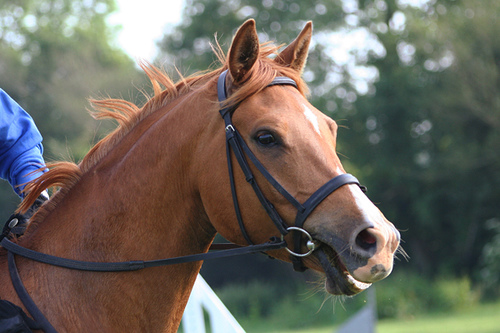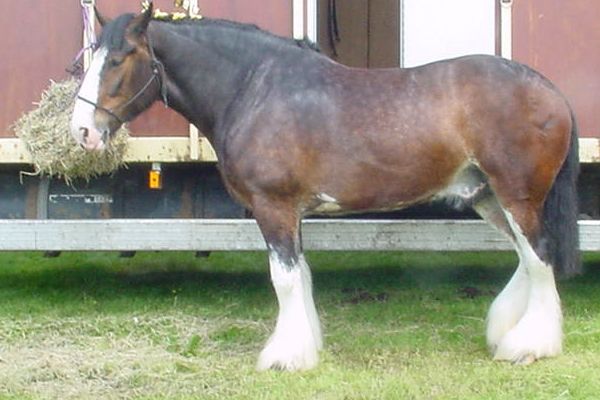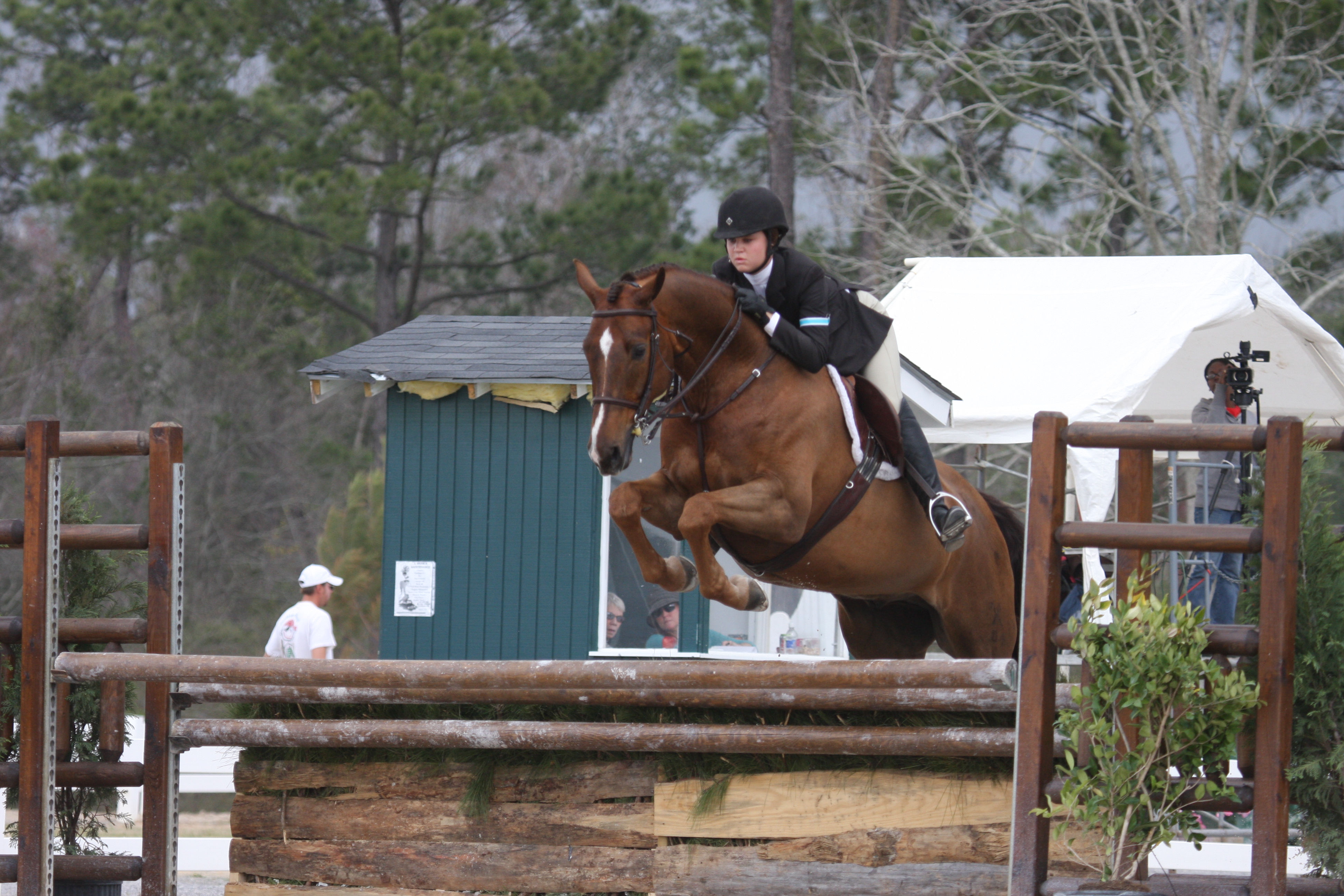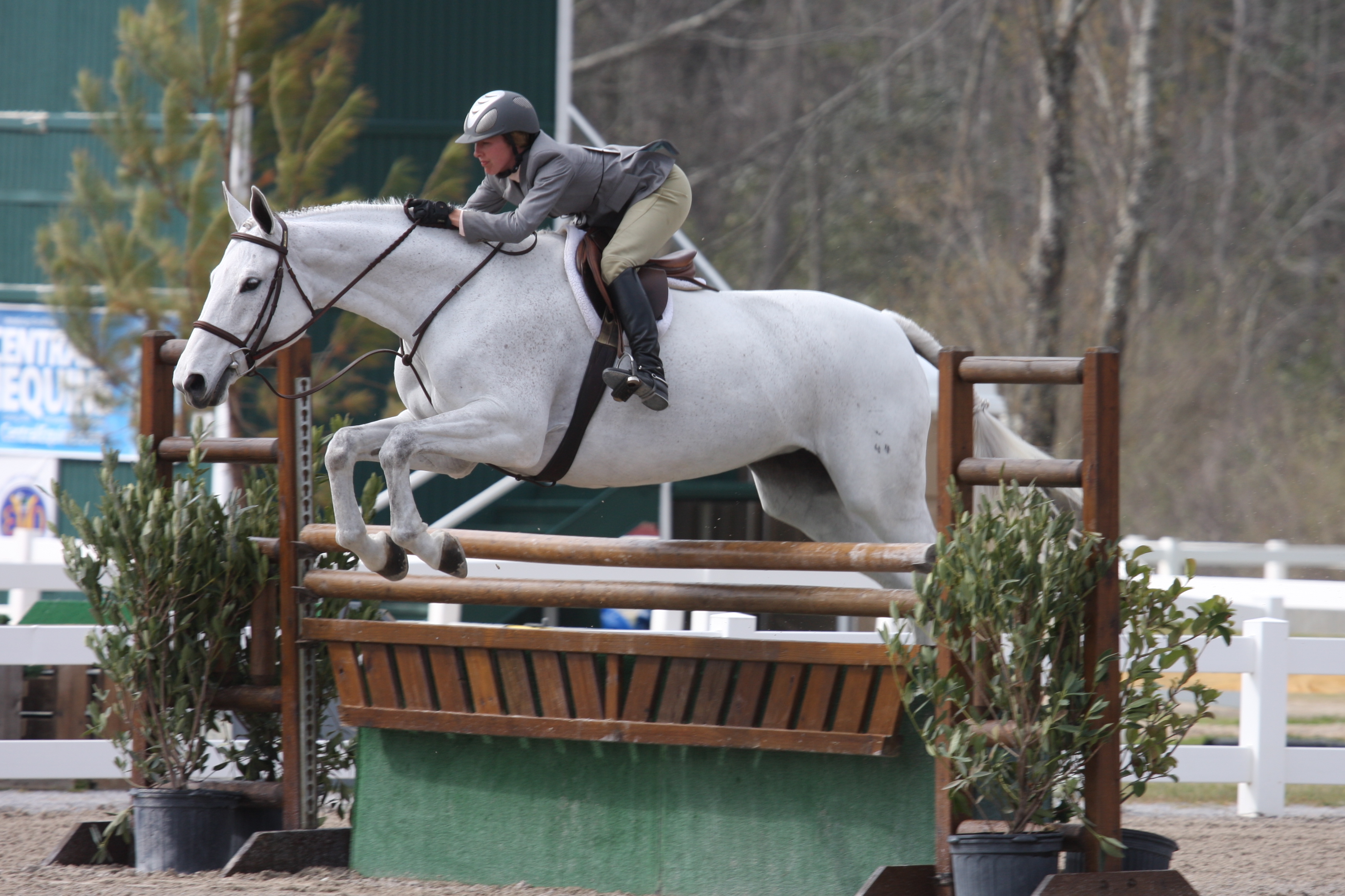|
Bit Ring
The bit ring is the ring on the side of a horse's bit (horse), bit, particularly on a snaffle bit. It is used as a point of attachment for the cheekpieces of the bridle and for the reins. It also has an effect on the action of the bit. Therefore, the design of the ring is something to consider when choosing a bit for a horse, even though the bit mouthpiece generally has a greater effect than the ring. Choices in bit rings can be found in direct pressure bits such as snaffle bits or bradoons. Leverage bits such as the pelham bit, pelham, and curb bit have a bit shank rather than a bit ring. (''see bit shank''). The Kimblewick (bit), Kimblewick has a unique design in that the side of the bit resembles a bit ring, but actually is a very short bit shank, as it applies leverage pressure to the mouthpiece. Bit ring designs also are subject to fads. The loose ring is currently one of the most popular overall designs, but several years ago the eggbutt and dee-ring were quite common. ... [...More Info...] [...Related Items...] OR: [Wikipedia] [Google] [Baidu] |
Bit (horse)
The bit is an item of a horse tack, horse's tack. It usually refers to the assembly of components that contacts and controls the horse's mouth, and includes the shanks, rings, cheekpads and mullen, all described here below, but it also sometimes simply refers to the ''mullen'', the piece that fits inside the horse's mouth. The mullen extends across the horse's mouth and rests on the ''bars'', the region between the incisors and molars where there are no horse teeth, teeth. The bit is located on the horse's head by the , and which has itself several components to allow the most comfortable adjustment of bit location and control. The bit, bridle and reins function together to give control of the horse's head to the rider. The bit applies pressure to the horse's mouth, and reinforces the other control signals from the rider's legs and weight distribution. A well schooled horse needs little pressure on the bit from a skilled rider. Studies have indicated that soft, consistent bit co ... [...More Info...] [...Related Items...] OR: [Wikipedia] [Google] [Baidu] |
Draft Horse
A draft horse (US) or draught horse (UK), also known as dray horse, carthorse, work horse or heavy horse, is a large horse bred to be a working animal hauling freight and doing heavy agricultural tasks such as plowing. There are a number of breeds, with varying characteristics, but all share common traits of strength, patience, and a docile temperament. While indispensable to generations of pre-industrial farmers, draft horses are used today for a multitude of purposes, including farming, draft horse showing, logging, recreation, and other uses. Draft breeds have been crossbred with light riding breeds such as the Thoroughbred to create sport horses or warmbloods. While most draft horses are used for driving, they can be ridden and some of the lighter draft breeds are capable performers under saddle. Characteristics Draft horses are recognizable by their extremely muscular build. They tend to have broad, short backs with powerful hindquarters. In general, they are t ... [...More Info...] [...Related Items...] OR: [Wikipedia] [Google] [Baidu] |
DeeRing
Deering may refer to: Places in the United States * Deering, Alaska, a city * Deering, Maine, a former town annexed to Portland in 1898 * Deering, Missouri, an unincorporated community * Deering, New Hampshire, a town ** Deering Reservoir * Deering, North Dakota, a city People * Adolph A. Deering, American politician * Charles Deering (1852–1927), American business man and philanthropist * Fred Deering (1923-2010), American politician * James Deering (1859–1925), American industrialist, developer of Miami, Florida * John Deering (baseball) (1879–1943), Major League Baseball pitcher * John Deering (murderer) (1898–1938), American murderer executed by firing squad in Utah * John Deering (politician) (1833-1904), American politician and mayor of Portland, Maine * Myles Deering (born 1953), Army National Guard major general * Pat Deering (born 1967), Irish politician * Richard Dering (c. 1580–1630), also spelled Deering, English Renaissance and Baroque composer * ... [...More Info...] [...Related Items...] OR: [Wikipedia] [Google] [Baidu] |
Equitation
Equitation is the art or practice of horse riding or horsemanship. More specifically, equitation may refer to a rider's position while mounted, and encompasses a rider's ability to ride correctly and with effective aids. In horse show competition, the rider, rather than the horse is evaluated. Such classes go by different names, depending on region, including ''equitation classes'', ''rider classes'', or ''horsemanship classes.'' Judging criteria covers the rider's performance and control of the horse, use of riding aids, proper attire, correct form, and usually factor in rider poise and the cleanliness and polish of horse, rider and equipment. The performance of the horse is not judged ''per se'', but a poorly performing horse is considered to reflect the ability of the rider. Equitation classes occur in the Hunt seat, Saddle seat, Dressage, and Western disciplines. A good equitation rider is always in balance with the horse, maintains a correct position in every gait, moveme ... [...More Info...] [...Related Items...] OR: [Wikipedia] [Google] [Baidu] |
Show Jumping
Show jumping is a part of a group of English riding equestrian events that also includes eventing, hunters, and equitation. Jumping classes are commonly seen at horse shows throughout the world, including the Olympics. Sometimes shows are limited exclusively to jumpers. Sometimes jumper classes are offered in conjunction with other English-style events. Sometimes, show jumping is but one division of a very large, all-breed competition that includes a very wide variety of disciplines. Jumping classes may be governed by various national horse show sanctioning organizations, such as the United States Equestrian Federation or the British Showjumping Association. International competitions are governed by the rules of the International Federation for Equestrian Sports. Hunters or jumpers Show jumping events have hunter classes, jumper classes and hunt seat equitation classes. Hunters are judged subjectively on the degree to which they meet an ideal standard of manners, s ... [...More Info...] [...Related Items...] OR: [Wikipedia] [Google] [Baidu] |
Horse Racing
Horse racing is an equestrian performance activity, typically involving two or more horses ridden by jockeys (or sometimes driven without riders) over a set distance for competition. It is one of the most ancient of all sports, as its basic premise – to identify which of two or more horses is the fastest over a set course or distance – has been mostly unchanged since at least classical antiquity. Horse races vary widely in format, and many countries have developed their own particular traditions around the sport. Variations include restricting races to particular breeds, running over obstacles, running over different distances, running on different track surfaces, and running in different gaits. In some races, horses are assigned different weights to carry to reflect differences in ability, a process known as handicapping. While horses are sometimes raced purely for sport, a major part of horse racing's interest and economic importance is in the gambling associated ... [...More Info...] [...Related Items...] OR: [Wikipedia] [Google] [Baidu] |
Show Hunter
The Hunter division is a branch of horse show competition that is judged on the horse's performance, soundness and when indicated, conformation, suitability or manners. A "show hunter" is a horse that competes in this division. Show hunters, ideally, show many qualities that were rewarded in the fox hunting field such as manners, fluid movement, and correct jumping style. They are shown in hunt seat style tack. Any breed can be exhibited, but at the highest levels they are usually of Warmblood or Thoroughbred type, though a hunter-style pony is also seen in youth classes. Some classes are restricted to horses of certain breeds or height. In the United States, show hunters are primarily exhibited over fences in various divisions, including Green Hunter, Working Hunter, Conformation Hunter and so on, with a few additional classes offered for horses shown in-hand or on the flat, known as "Hunter Under Saddle." In the United Kingdom, competition over fences is called "Working ... [...More Info...] [...Related Items...] OR: [Wikipedia] [Google] [Baidu] |
Pelham Bit
A pelham bit is a type of bit used when riding a horse. It has elements of both a curb bit and a snaffle bit. In this respect a pelham bit functions similar to a double bridle, and like a double bridle it normally has "double" reins: a set of curb reins and a set of snaffle reins. Because it has a bit shank and can exert curb-style pressure on the horse, it is considered a curb bit. Accessed November 15, 2008 Like all curb bits, a pelham bit has a mouthpiece, shanks with both purch ... [...More Info...] [...Related Items...] OR: [Wikipedia] [Google] [Baidu] |
Eggbutt
The bit ring is the ring on the side of a horse's bit, particularly on a snaffle bit. It is used as a point of attachment for the cheekpieces of the bridle and for the reins. It also has an effect on the action of the bit. Therefore, the design of the ring is something to consider when choosing a bit for a horse, even though the bit mouthpiece generally has a greater effect than the ring. Choices in bit rings can be found in direct pressure bits such as snaffle bits or bradoons. Leverage bits such as the pelham, and curb bit have a bit shank rather than a bit ring. (''see bit shank''). The Kimblewick has a unique design in that the side of the bit resembles a bit ring, but actually is a very short bit shank, as it applies leverage pressure to the mouthpiece. Bit ring designs also are subject to fads. The loose ring is currently one of the most popular overall designs, but several years ago the eggbutt and dee-ring were quite common. There are also differences in the popul ... [...More Info...] [...Related Items...] OR: [Wikipedia] [Google] [Baidu] |
Show Jumper
Show jumping is a part of a group of English riding equestrian events that also includes eventing, hunters, and equitation. Jumping classes are commonly seen at horse shows throughout the world, including the Olympics. Sometimes shows are limited exclusively to jumpers. Sometimes jumper classes are offered in conjunction with other English-style events. Sometimes, show jumping is but one division of a very large, all-breed competition that includes a very wide variety of disciplines. Jumping classes may be governed by various national horse show sanctioning organizations, such as the United States Equestrian Federation or the British Showjumping Association. International competitions are governed by the rules of the International Federation for Equestrian Sports. Hunters or jumpers Show jumping events have hunter classes, jumper classes and hunt seat equitation classes. Hunters are judged subjectively on the degree to which they meet an ideal standard of manners, style, ... [...More Info...] [...Related Items...] OR: [Wikipedia] [Google] [Baidu] |
Race Horse
''Race Horse'' was an 1850 clipper barque. She set a record of 109 days from New York to San Francisco during the first Clipper Race around the Horn. Construction ''Race Horse'' was similar to a barque built by Samuel Hall a few years earlier, ''Coquette''. The design of ''Race Horse'' has been credited to both Samuel Hartt Pook and to Hall. According to a letter written by Hall to the "Boston Daily Atlas", he asked Pook to make the models and molds for ''Race Horse'' based on'' Coquette'', with a few modifications, in order to help Pook to "get his name before the public". First Clipper Race Around the Horn, 1850 ''Race Horse'' performed well in the First Clipper Race Around the Horn, which took place in 1850. ''Race Horse'' sailed from Boston to San Francisco in 109 days (or 94 days, 14 hours land to land). She made Cape Horn just 52 days out on this trip, 20 miles offshore. "The keen rivalry between clippers led to races over thousands of miles of seas; and upon the res ... [...More Info...] [...Related Items...] OR: [Wikipedia] [Google] [Baidu] |







